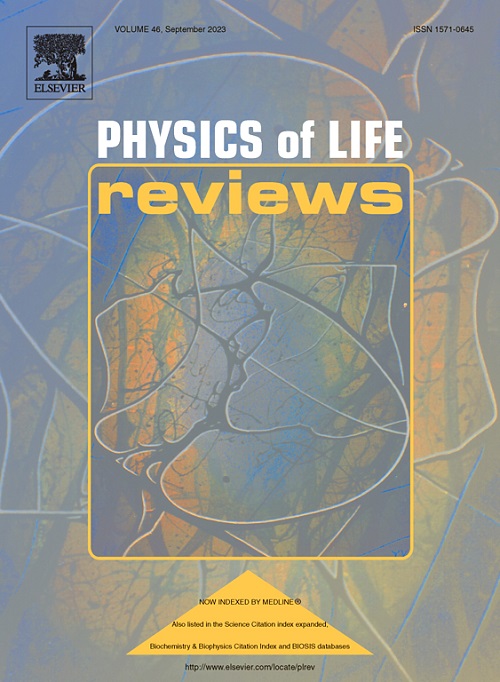Informational embodiment: Computational role of information structure in codes and robots
IF 14.3
1区 生物学
Q1 BIOLOGY
引用次数: 0
Abstract
The body morphology plays an important role in the way information is perceived and processed by an agent. We address an information theory (IT) account on how the precision of sensors, the accuracy of motors, their placement, the body geometry, shape the information structure in robots and computational codes. As an original idea, we envision the robot's body as a physical communication channel through which information is conveyed, in and out, despite intrinsic noise and material limitations. Following this, entropy, a measure of information and uncertainty, can be used to maximize the efficiency of robot design and of algorithmic codes per se. This is known as the principle of Entropy Maximization (PEM) introduced in biology by Barlow in 1969. The Shannon's source coding theorem provides then a framework to compare different types of bodies in terms of sensorimotor information. In line with the PEM, we introduce a special class of efficient codes used in IT that reached the Shannon limits in terms of information capacity for error correction and robustness against noise, and parsimony. These efficient codes, which exploit insightfully quantization and randomness, permit to deal with uncertainty, redundancy and compacity. These features can be used for perception and control in intelligent systems. In various examples and closing discussions, we reflect on the broader implications of our framework that we called Informational Embodiment to motor theory and bio-inspired robotics, touching upon concepts like motor synergies, reservoir computing, and morphological computation. These insights can contribute to a deeper understanding of how information theory intersects with the embodiment of intelligence in both natural and artificial systems.

信息体现:信息结构在代码和机器人中的计算作用
身体形态在智能体感知和处理信息的方式中起着重要作用。我们解决了一个信息理论(IT)帐户如何传感器的精度,电机的精度,他们的位置,身体的几何形状,塑造机器人和计算代码的信息结构。作为一个最初的想法,我们设想机器人的身体作为一个物理通信通道,通过它传递信息,进出,尽管固有的噪音和材料的限制。在此之后,熵,一种信息和不确定性的度量,可以用来最大化机器人设计和算法代码本身的效率。这就是1969年巴洛在生物学中引入的熵最大化原理(PEM)。香农的源编码定理为比较不同类型的身体在感觉运动信息方面提供了一个框架。与PEM一致,我们介绍了IT中使用的一类特殊的高效代码,这些代码在纠错的信息容量、抗噪声的鲁棒性和简约性方面达到了香农极限。这些有效的代码利用了深刻的量化和随机性,允许处理不确定性、冗余和紧凑性。这些特征可用于智能系统的感知和控制。在各种例子和闭幕讨论中,我们反思了我们的框架的更广泛的含义,我们称之为运动理论和生物启发机器人的信息体现,涉及运动协同,蓄水池计算和形态计算等概念。这些见解有助于更深入地理解信息理论如何与自然和人工系统中的智能体现相交叉。
本文章由计算机程序翻译,如有差异,请以英文原文为准。
求助全文
约1分钟内获得全文
求助全文
来源期刊

Physics of Life Reviews
生物-生物物理
CiteScore
20.30
自引率
14.50%
发文量
52
审稿时长
8 days
期刊介绍:
Physics of Life Reviews, published quarterly, is an international journal dedicated to review articles on the physics of living systems, complex phenomena in biological systems, and related fields including artificial life, robotics, mathematical bio-semiotics, and artificial intelligent systems. Serving as a unifying force across disciplines, the journal explores living systems comprehensively—from molecules to populations, genetics to mind, and artificial systems modeling these phenomena. Inviting reviews from actively engaged researchers, the journal seeks broad, critical, and accessible contributions that address recent progress and sometimes controversial accounts in the field.
 求助内容:
求助内容: 应助结果提醒方式:
应助结果提醒方式:


